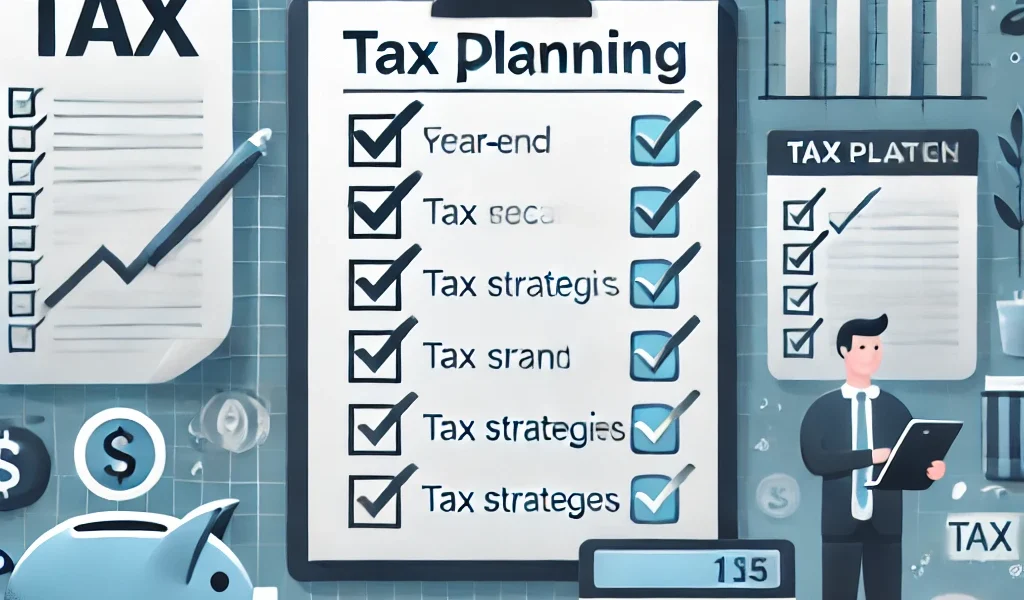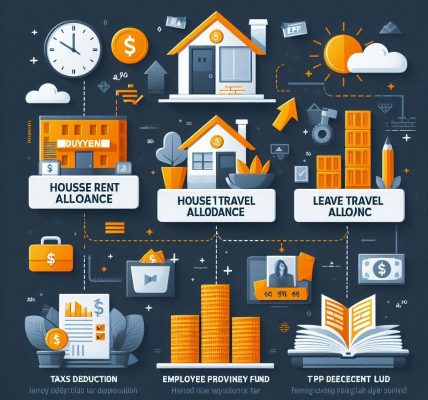As the year draws to a close, it’s the perfect time to take stock of your financial situation and implement tax-saving strategies. Proper year-end tax planning can help reduce your tax liability, maximize deductions, and ensure compliance with tax laws. Whether you’re an individual taxpayer or a business owner, this guide provides a comprehensive checklist to help you navigate the year-end tax planning process efficiently.
Why Year-End Tax Planning Matters
Effective tax planning allows individuals and businesses to take advantage of tax deductions, credits, and deferral strategies before the tax year ends. By making smart financial moves now, you can potentially save a significant amount on taxes and set yourself up for a strong financial start in the coming year.
Essential Year-End Tax Planning Strategies
1. Maximize Retirement Contributions
Contributing to retirement accounts can reduce taxable income while helping you secure your financial future. Consider maximizing contributions to:
- 401(k) Plans: The annual contribution limit is $22,500 (or $30,000 if you are 50 or older).
- Traditional and Roth IRAs: The limit is $6,500 (or $7,500 for those aged 50 and older).
- Health Savings Accounts (HSAs): If you have a high-deductible health plan, you can contribute up to $3,850 (individual) or $7,750 (family) tax-free.
2. Harvest Tax Losses
Tax-loss harvesting allows you to offset capital gains by selling underperforming investments. Here’s how:
- Sell investments that have declined in value to realize a capital loss.
- Use losses to offset capital gains from other investments.
- Carry forward excess losses to future tax years.
3. Take Advantage of Charitable Contributions
Donating to qualified charities can provide tax deductions while supporting meaningful causes. Consider:
- Cash Donations: Deduct up to 60% of adjusted gross income (AGI) for cash contributions to eligible charities.
- Donor-Advised Funds (DAFs): Contribute to a DAF for immediate tax benefits while distributing donations over time.
- Qualified Charitable Distributions (QCDs): If you’re over 70 ½, you can donate up to $100,000 directly from your IRA without it counting as taxable income.
4. Utilize Flexible Spending Accounts (FSAs)
FSAs allow employees to save pre-tax dollars for medical expenses. Check your balance and use funds before the year-end, as many FSAs have a “use-it-or-lose-it” rule with limited carryover options.
5. Review and Optimize Your Withholding
Ensure your withholding aligns with your expected tax liability to avoid a large tax bill or refund. You can adjust withholding by:
- Reviewing your W-4 form and making necessary changes.
- Using the IRS withholding calculator to estimate taxes owed.
6. Make Estimated Tax Payments (If Required)
If you’re self-employed or earn additional income without withholding, ensure you’ve paid enough in estimated taxes throughout the year. The IRS requires quarterly payments to avoid penalties.
7. Defer Income to the Next Year
If you expect your tax rate to be lower next year, consider deferring income where possible. Strategies include:
- Asking your employer to delay year-end bonuses until January.
- Postponing invoicing clients until the new year if you are self-employed.
8. Accelerate Deductible Expenses
If you expect to be in a lower tax bracket next year, accelerating deductible expenses can maximize your deductions. Consider:
- Paying January’s mortgage payment in December to deduct interest this year.
- Prepaying state and local taxes (subject to the SALT deduction limit of $10,000).
- Making extra charitable contributions before December 31.
9. Review Business Deductions and Expenses
For business owners, year-end is a great time to optimize deductions. Consider:
- Purchasing necessary equipment or software before year-end to benefit from Section 179 deductions.
- Writing off bad debts.
- Reviewing employee benefits and retirement plan contributions.
10. Plan for Required Minimum Distributions (RMDs)
If you’re 73 or older, you must take required minimum distributions (RMDs) from traditional IRAs and 401(k)s. Failure to do so can result in hefty penalties.
Year-End Tax Planning Checklist
✔️ Maximize contributions to retirement accounts.
✔️ Harvest tax losses to offset capital gains.
✔️ Donate to charities for tax deductions.
✔️ Spend down FSA balances before they expire.
✔️ Adjust withholding and make estimated tax payments.
✔️ Defer income if beneficial for tax purposes.
✔️ Prepay deductible expenses where applicable.
✔️ Optimize business deductions and investments.
✔️ Take RMDs if required.
✔️ Consult a tax professional for personalized guidance.
Conclusion
Proactive year-end tax planning can lead to significant tax savings and financial stability. By following this checklist and implementing smart tax strategies, you can minimize your tax burden and maximize your financial well-being. Since tax laws frequently change, consulting a tax professional ensures that you remain compliant while optimizing your savings.




